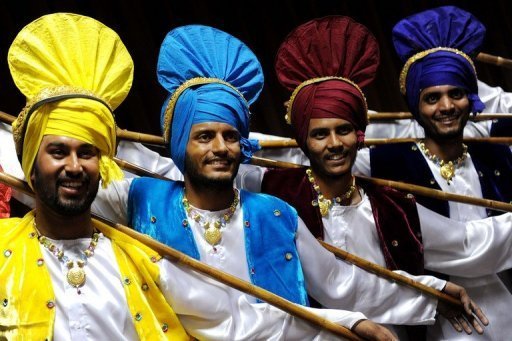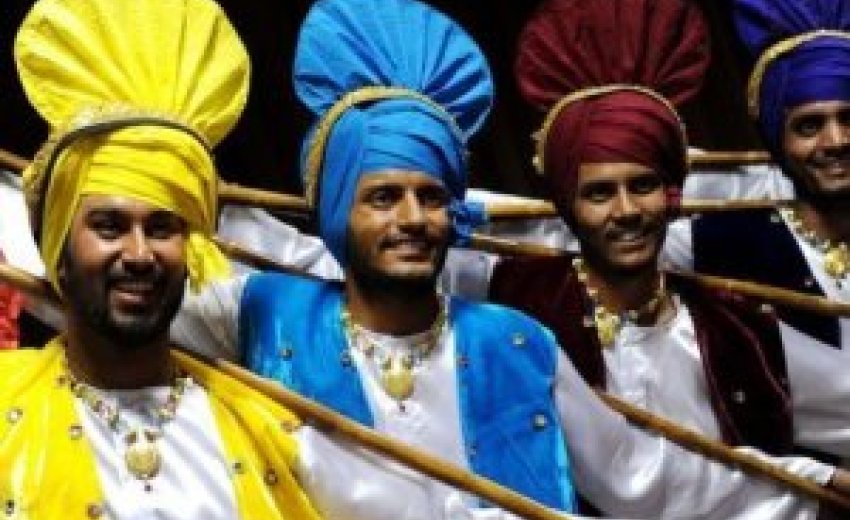Thousands of Sikh men, each with a unique work of art perched on his head, will take to the streets of India today. Their mission: to prove to the world that the turban is not old hat.
Scores of rallies, prayer vigils and tying competitions will mark World Turban Day, an event conceived amid concerns that young Sikhs are abandoning the most conspicuous emblem of their faith — six to eight metres of cloth wrapped around their heads — in favour of close-cropped Western-style hairdos.

“We are inviting Sikhs who have forsaken the turban to return to the fold,” said Jaswinder Singh of the Akaal Purkh Ki Fauj (Army of God), a Turban Pride movement. “This day is their chance to reconnect with our Gurus.”
Sikh men — and some women — have worn turbans since 1699 when Guru Gobind Singh, the religion’s tenth Master, prohibited them from cutting their hair. Every man was given the surname "Singh" — lion — and was required to wear a steel bangle, long cotton underwear, a sheathed sword and wooden comb.
In recent decades many Sikhs have preferred to blend into India’s Hindu-dominated society. Their turbans and beards are often confused with those of Islamist extremists and count against them when job hunting, young Sikhs say.
“People think I’m Taliban,” said Gagandeep Singh, 26, a founder member of the recently formed Sikh Turban Pride Organisation. “The prejudice is ridiculous: I’m not a terrorist, I’m on Facebook.”
Others trace the demise to 1984 when Indira Gandhi, the Indian Prime Minister and a Hindu, was assassinated by her Sikh bodyguards. In the riots that came after people wearing turbans were attacked.
There are no official figures but Sikh leaders say that about half the community wear turbans, compared with 80 per cent to 90 per cent a few decades ago. The trend must be reversed, they believe, if Sikhism is to endure.
“A big turban may make it difficult to play cricket. But a Sikh without a turban is like a king without a crown,” Singh Sahib Giani Gurbachan Singh Ji, the religion’s supreme spiritual leader, told The Times.
“Already we are a microscopic community of just 20 million worldwide. The turban is a crucial demonstration of our existence,” said S. Dilmegh Singh, the secretary of the Sikh Gurdwara Prabandhak Committee (SGPC), which oversees the Golden Temple in Amritsar, Sikhism’s holiest place. “Our youths are flirting with apostasy by cutting the hair, trimming their beards and not wearing turbans. That’s why World Turban Day is so important.”
World Turban Day is in its seventh year and the SGPC says that it is seeing results. The religion’s leaders have also given their blessing to Mr Singh International, a kind of beauty pageant for Sikh men held every two years at which entrants are judged on criteria including the quality of their turbans.
In Amritsar a turban clinic that opens each evening to teach boys how to tie a turban has attracted more than a thousand pupils in the past few years, according to Javinder Singh Jassi, its founder. The children, most wearing jeans and trainers, spend up to two weeks learning a skill that was handed down previously from father to son.
The students are also introduced to Turban Tutor 1.0, a piece of software that helps them to select a turban.
“The most important thing is that its shape complements the shape of your face,” Mr Jassi said: “A big turban on a small head is a big no-no. Colour is also important. The great thing is that there is no one set style. Your turban grows with you. Each is different.”
Comments:
Deepak Natarajan wrote:
Some reckon that besides protecting one from the heat and the cold of
the subcontinent,the turban,in not a few cases adds substantial sex
appeal.
Dhana Gossain wrote:
I have to agree with Deepak, there is nothing smarter (or sexier) than a Sikh man with a smart, sharp turban and trimmed beard......think Naveen Andrews in 'The English Patient'....
